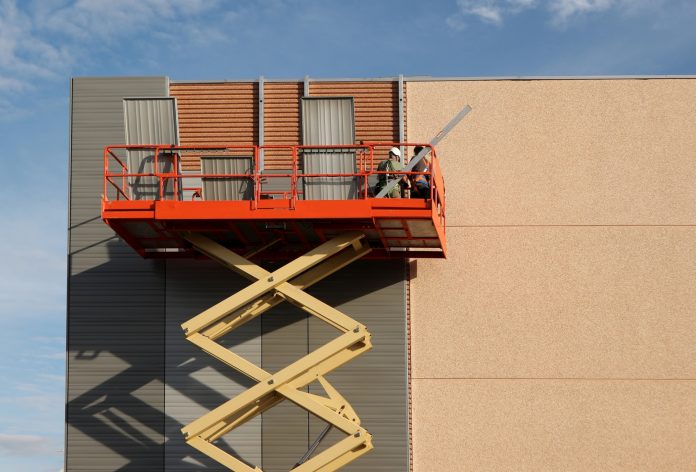Although the issue has been partially obscured from public view by the coronavirus crisis, the UK government has said that work to replace flammable cladding on residential buildings of 18m or taller remains a priority. Helen Andrews, a construction law partner at European law firm Fieldfisher, takes a look
Before the arrival of coronavirus, one of the biggest challenges facing the UK real estate and construction industries was the remediation of unsafe Aluminium Composite Material (ACM) cladding systems on high-rise buildings. On 6 April, the Ministry of Housing, Communities & Local Government (MHCLG) published an update on this issue.
Prior to this, on 11 March, the government had announced in the Budget that it would provide £1bn in 2020-21 to fund the removal and replacement of unsafe non-ACM cladding systems on residential buildings of 18m and over.
This funding is in addition to the £600m already made available to ensure the remediation of the highest risk ACM cladding, of the type that was in place on Grenfell Tower (the ACM Fund).
Ensuring that buildings are safe, including progressing the remediation of high-rise buildings with unsafe cladding, particularly those containing ACM, and maintaining measures to ensure buildings are safe until they have been remediated, remains an absolute priority.
The government’s view is that this work is critical to public safety and should continue, within official guidelines on controlling the spread of coronavirus (COVID-19), wherever possible.
The government has put in place a project management support team with construction expertise to help oversee remediation. This team will identify blockers to progress and work directly with those responsible for remediation to support individual projects.
It will also work to understand the impact of COVID-19 on remediation projects and identify ways to reduce the impact on the pace of progress.
Building owners should be aware of the following measures and advice to ensure all residential blocks are safe:
Building Safety Fund
The Building Safety Fund will support the remediation of non-ACM cladding systems, which are not in compliance with Requirement B4, from Part B of Schedule 1 of the Building Regulations, requiring that “the external walls of the building shall adequately resist the spread of fire over the walls and from one building to another, having regard to the height, use and location of the building”.
Examples are unsafe types of high-pressure laminate (HPL), wood and other class C/D cladding installed on some high-rise residential buildings.
The Building Safety Fund will be available to remediate buildings containing unsafe cladding in both the social and private residential sectors of 18m in height and over. Experts have advised that this combination of risks pose the greatest threat to public safety and should be remediated (the height stipulation is linked to the reach of fire and rescue service equipment).
In the private sector, this funding will be for the benefit of leaseholders; in the social sector, it will focus on landlords who are unable to pay, ensuring the necessary works take place and cost is not a barrier to remediation.
The expectation is that building owners who have already committed to fund remediation works without passing on the costs to leaseholders will continue to honour these commitments.
Building owner responsibility
The fund does not absolve industry from taking responsibility for any failures that led to unsafe cladding materials being put on these buildings.
As a condition of funding, building owners must pursue warranty claims and appropriate action against those responsible for putting unsafe cladding on these buildings, with any damages recovered paid to government once recouped.
As with the ACM Fund, the government expects developers, investors and building owners who have the means to pay to take responsibility and cover the costs of remediation themselves, without passing on costs to leaseholders.
Building owners remain legally responsible for the fire safety of their buildings. In blocks of flats, this will generally be the freeholder.
The government is supporting local authorities and Fire & Rescue Services to take enforcement action where building owners refuse to remediate high-rise buildings with unsafe cladding.
The Fire Safety Bill, which was introduced to parliament on 19 March, will make clear that the Fire Safety Order applies to external walls, including cladding, putting beyond doubt that Fire & Rescue Services can use their enforcement powers to address these risks.
Expert Panel’s Advice Note for building owners
Set up in 2017 in the wake of the Grenfell Tower tragedy the previous year, the Building Safety: Independent Expert Advisory Panel publishes regular guidance on fire safety.
In its January note for building owners, the panel acknowledges that there are a number of risk factors – in addition to height and cladding – which can compromise the safety of a building.
But, when it comes to achieving safe evacuation in the event of a fire, it is clear that remedial funding needs to be focused on high-rise buildings with unsafe cladding, as many occupants of such buildings will be beyond the reach of fire and rescue equipment.
However, other fire safety risks, including those affecting lower-rise buildings, need to be addressed by building owners and landlords, as these will not be funded by government.
Engagement with the mortgage industry
Government funding for non-ACM remediation on buildings over 18m provides support to leaseholders to ensure their buildings are made safe, meaning they have no reason not to remediate such buildings.
In addition, this funding, together with the expectation that those responsible should pay for remedial measures, will mean that banks and mortgage lenders have some certainty that remediation costs for these buildings will be covered, giving them the confidence to lend on flats in high-rise blocks.
The government has been supportive of industry efforts to apply consistency in how such properties are valued.
The industry solution for buildings 18m and over has been the introduction of a new process to support valuation through an EWS1 form.
Surveyors, lenders, insurers and other parts of industry, working with building owners, now need to ensure that the EWS1 form is shared appropriately to support this section of the housing market.
To that end, an industry group is designing a data-sharing portal so lenders and leaseholders can access the information needed to proceed with sales and remortgaging.
Industry is devising an approach which will apply reasonable valuation judgements to buildings under 18m in height, and the government plans to hold a roundtable with mortgage lenders to ensure this is taken forward.
Many construction professionals have experienced challenges in accessing adequate professional indemnity insurance. This has been a particular concern for fire engineers, who are crucial to assessing fire safety in new and existing high-rise residential buildings. The insurance industry has recognised this as an issue and the government is continuing to work with the industry to consider potential solutions.
To ensure fire engineers are able to play their part in advising on the safety of high-rise and other complex buildings, the government will work with these professionals to establish a clear and consistent approach to fire risk assessments of cladding.
There are also plans to set up a panel of fire engineers to help with assessment of more difficult or complex buildings.
Next steps
The government is working to make this new funding available as quickly as possible and aims to publish the prospectus for the new fund in May this year, and open for registrations soon after.
In the meantime, building owners are advised to establish the exact materials used in the external wall systems of their buildings.
They should fully consider and mitigate the risks of any external wall systems and take action in line with their responsibilities, including ensuring they have an up-to-date fire risk assessment.
The funding is seen as a short-term intervention to incentivise greater pace of remediation across the existing stock of high-rise buildings. However, the 6 April update makes clear that £1.6bn will be the limit to the government’s funding support for such remediation.
It expects this scheme will deliver positive change in advance of a more systematic approach to remediation, which will be implemented through the Building Safety Bill and the new regime of “safety case reviews” recommended in Dame Judith Hackitt’s Independent Review of Building Regulations & Fire Safety.
Helen Andrews
Construction law partner
Fieldfisher
+44 (0)121 210 6000

















